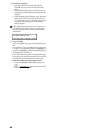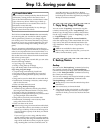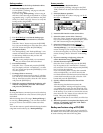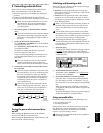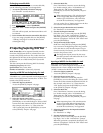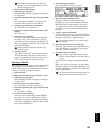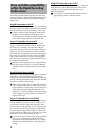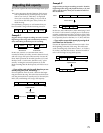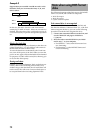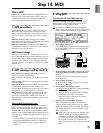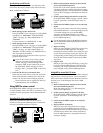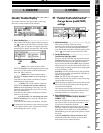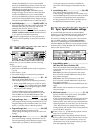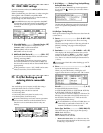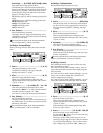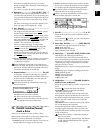
72
Example 3
Suppose that you recorded A and B on track 1 as the
first take. Then you overwrote the Intro, A’, B’, and
Solo as take 2.
In this case, the take 1 data for A and B will remain
underlying A’ and B’ of track 1. However once take 2 is
finished, the audio data of take 1 will not be used at all,
so it is not necessary to perform the Optimize operation
etc.
Deleting the Undo data
Even if you use disk capacity efficiently in the above sit-
uations (examples 1, 2, 3), the old data will remain on
the hard disk in order to allow Undo.
To erase the data that is maintained by the Undo func-
tion, turn off the power of the D12. When you turn the
power on once again, all data that had been maintained
for purposes of Undo will be erased, thus allowing you
to recover this disk capacity.
Sharing audio data
If before you executed Optimize Track, audio data was
used by other tracks (including virtual tracks) or by
another song on the same disk, the old audio data will
not be erased. This will cause even more disk space to
be occupied than before executing Optimize Track.
The following functions of the D12 support FAT16 DOS
format. CD, CD-R, and CD-RW are exceptions.
• WAV file import
• WAV file export
• System software update
If the external drive is not recognized
If an external SCSI drive is connected to the D12 and
the drive list indicates “Unknown Disk” (i.e., if the D12
cannot recognize the drive), you can use the following
procedure to make the D12 recognize the drive.
1 Connect the external SCSI device to the D12, and
use the “DiskUtil” tab page to initialize it.
(→p.68, 79)
2 Re-connect the external SCSI drive you initial-
ized in step 1 to your computer.
• For Windows → select normal format and exe-
cute formatting.
• For Macintosh → select MS-DOS format and
execute formatting.
BA
Take 1
Take 2
Take 1
Intro B'A' Solo
Intro
B'A'
Solo
Note when using DOS format
disks



